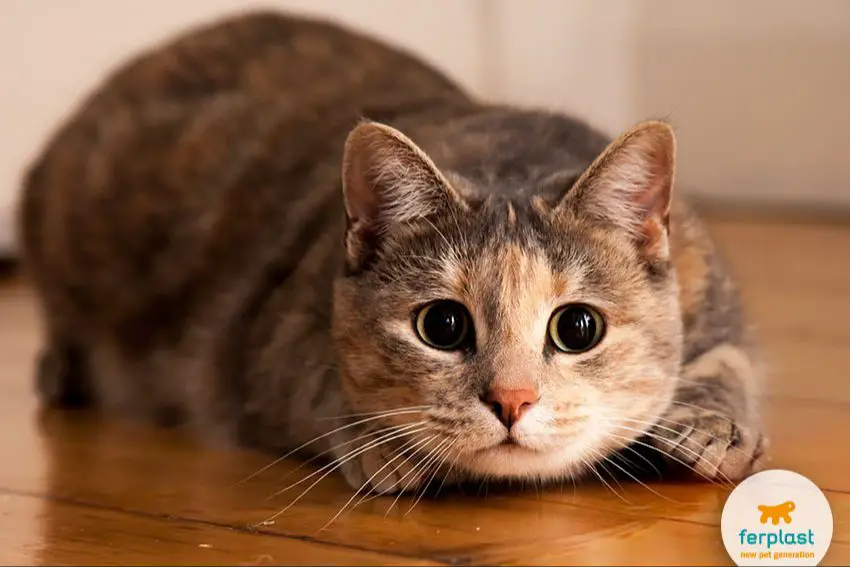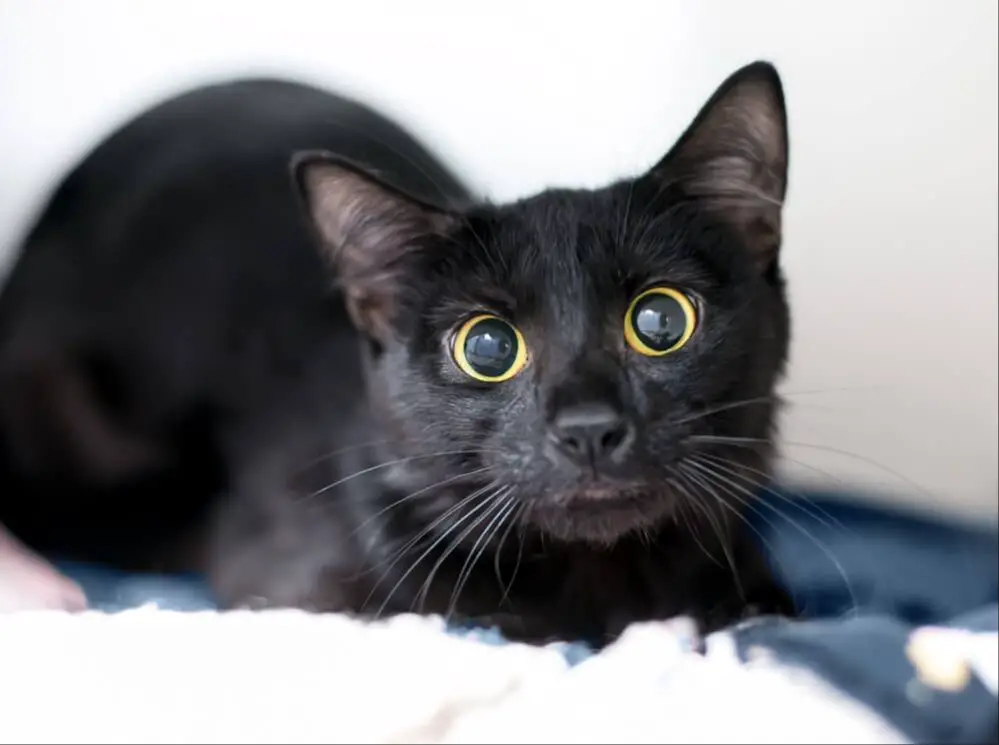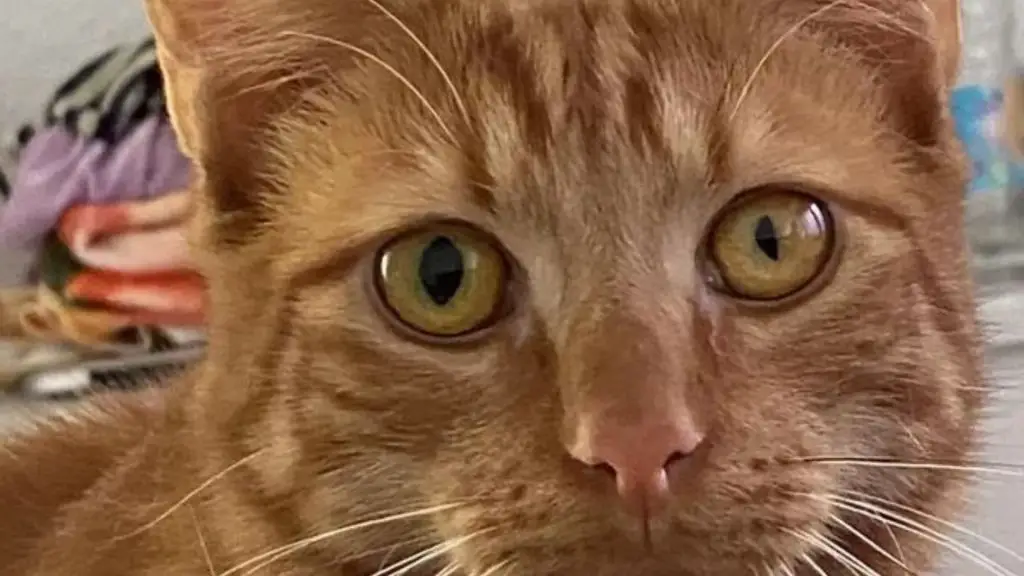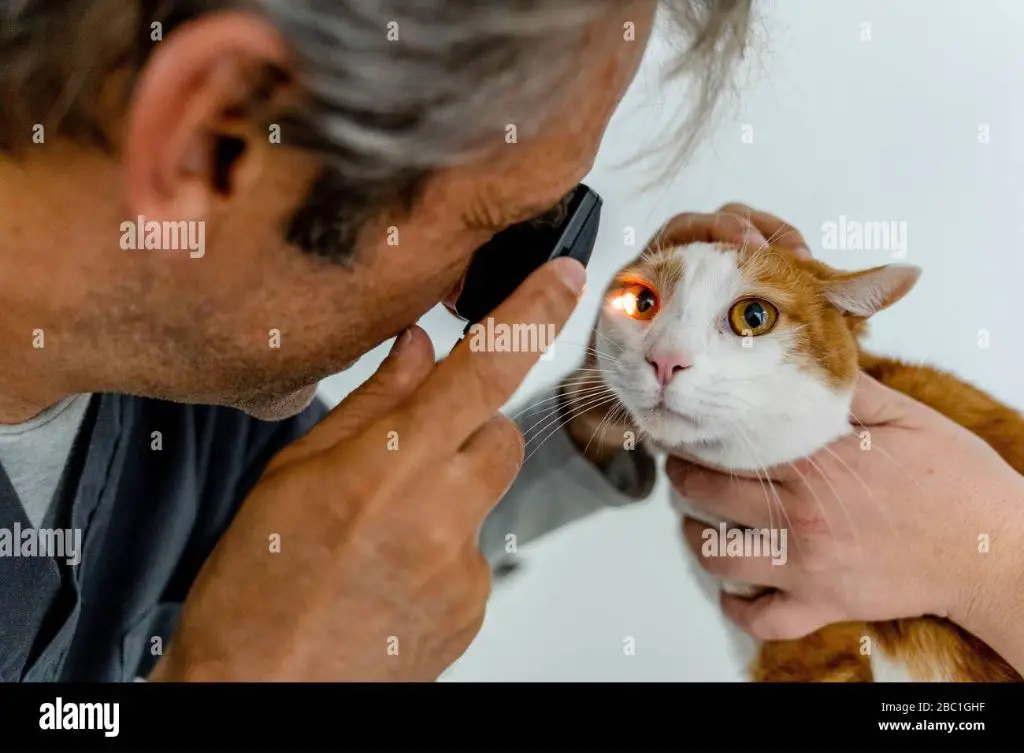What Are Cat Pupils?
Cat pupils are the black opening in the center of the iris of a cat’s eyes that controls how much light enters (SOURCE: https://www.merckvetmanual.com/cat-owners/eye-disorders-of-cats/eye-structure-and-function-in-cats). The pupils function like the aperture of a camera, constricting in bright light and dilating in dim light to control the amount of light that reaches the back of the eye. This helps cats see well in both bright and low light conditions.
The muscles surrounding the pupil control how wide or narrow it becomes. When the pupillary sphincter muscle contracts, the pupil becomes narrower or constricted. When the dilator muscle contracts, the pupil enlarges or dilates (SOURCE: https://www.merckvetmanual.com/cat-owners/eye-disorders-of-cats/eye-structure-and-function-in-cats). This unconscious response allows just the right amount of light to enter the eye for optimal vision.
Anatomy of Cat Eyes
Cats have incredibly complex eyes that allow them to see well in low light conditions. The key parts of a cat’s eye related to their pupils include:
- Iris – The colored part of the eye that controls the pupil size. It is made up of muscles that contract to constrict the pupil.
- Pupil – The black opening in the center of the iris that allows light into the eye. It can dilate and constrict to control light intake.
- Retina – Contains light-sensitive cells and nerve fibers that detect light and send signals to the brain to form images.
- Cornea – The transparent outer layer that covers the front of the eye and helps focus light.
- Lens – Focuses light onto the retina. Its shape changes to allow the eye to focus on objects at various distances.
The unique vertical slit shape of cat pupils gives cats better control over the amount of light entering the eye. The pupils have specialized muscles that allow rapid dilation and constriction.1

How Cat Pupils Dilate
A cat’s pupils dilate through the action of muscles surrounding the iris. The iris is the colored part of the eye containing the pupil. It is made up of two sets of muscles: the sphincter muscles and the dilator muscles.
The sphincter muscles constrict the pupils, making them smaller. The dilator muscles pull the iris outward, causing the pupils to enlarge or dilate. These muscles work in opposition to control pupil size.
In low light conditions, the dilator muscles contract and the sphincter muscles relax. This enlarges the pupil opening to allow more light to enter the eye. According to the Cat Box Classics blog, cat pupils can dilate to almost 60% larger than their original size in dim light [1]. This improves their ability to see in darkness.
The process of dilation occurs rapidly thanks to the eye’s muscular control. Cats can almost instantly adjust their pupils between dilated and constricted states depending on the lighting conditions. The change happens involuntarily as an automatic reflex to the available light entering the eye.
Why Do Cat Pupils Dilate?
Cats’ pupils dilate for several key reasons related to vision, hunting, and arousal/excitement:
1. Hunting – A cat’s pupils will dilate when they are zoning in on potential prey. This allows more light to enter the eyes and improves their ability to accurately judge distances and closely track movement. The expansion of the pupils optimizes their vision for hunting [1].
2. Night Vision – Cat pupils will also dilate in low light conditions to allow in more light and improve night vision. Since cats are crepuscular and active at dawn and dusk, dilation helps optimize their vision in dim environments
3. Arousal/Excitement – A cat’s pupils will rapidly dilate during states of high arousal or excitement, such as when startled or presented with a favored toy/treat. This involuntary response prepares their vision for action and is closely tied to stimulation of the sympathetic nervous system [2].
Factors That Cause Dilation
There are several factors that can cause a cat’s pupils to dilate, including:

Darkness
One of the most common reasons a cat’s pupils dilate is due to darkness. Cats are crepuscular, meaning they are most active at dawn and dusk. Their pupils dilate in low light conditions to allow more light into the eyes and improve night vision [1].
Hunting Instincts
A cat’s pupils may also dilate when they go into “hunt mode” and are intently focused on potential prey. The dilation helps them pinpoint the prey’s location and prepare to pounce [2].
Arousal/Excitement
High arousal and excitement, such as during playtime or when introduced to a new toy or food, can trigger pupil dilation. This reflex helps them visually scout their surroundings [3].
Medications
Certain medications like atropine eye drops prescribed after eye exams will cause temporary dilation. Anesthetics used before surgery may also lead to dilated pupils [2].
Dilation vs Constriction
The pupils of cat eyes continuously adjust in size depending on environmental conditions. This automatic process is controlled by the iris, which is the colored part of the eye. When the iris expands and contracts, it changes the size of the pupil opening in the center. There are two main types of adjustment:
- Dilation – The pupil enlarges and expands in size, allowing more light to enter the eye.
- Constriction – The pupil gets smaller and tighter, reducing the amount of light that can pass through.
Dilation occurs in dim lighting when the eye needs to take in more light to see clearly. Constriction happens in bright conditions when too much light is coming in, so the pupil shrinks to avoid damage or discomfort. The main difference is that dilation expands the pupil while constriction tightens it. But both processes serve the same purpose of regulating light intake for optimal daytime and nighttime vision.
Impact on Vision
The dilation and constriction of a cat’s pupils has a significant impact on its vision. When a cat’s pupils dilate fully, it allows more light to enter the eyes and improves their ability to see in low light conditions Are Dilated Pupils in Cats Something to Worry About?. This gives cats excellent night vision and allows them to hunt and navigate effectively when it’s dark. The large dilated pupils let in more light to stimulate the retina.

Full dilation results in a wider field of view, which is advantageous for detecting motion and changes in the environment when a cat is alert or fearful. However, it comes at the cost of visual acuity and focusing ability. When pupils are constricted in bright light, cats have sharper vision and can better detect fine details and stationary objects. The constricted pupils serve as natural “sunglasses” to prevent too much light from flooding the retina.
So dilation adapts cat eyes for low light conditions and improves night vision, while constriction adapts them for daylight and sharper vision. The ability to dynamically adjust pupil size based on ambient lighting is an important aspect of feline vision.
Breed Differences
There are some notable differences in pupil size between cat breeds. For example, Persian cats tend to have larger pupils compared to other breeds. This is likely an adaptation to allow more light into their eyes due to their flatter faces and eyelids [1].
Siamese cats often have oblong, almond-shaped pupils rather than the typical round pupils of other breeds. This shape may help filter light more precisely as their pupil size changes [2].
Maine Coon cats tend to have larger pupils overall, which is thought to aid their night vision and hunting abilities. Their pupils can dilate very wide to take in more light in low lighting conditions [3].
Some breeds like Turkish Vans and Bombay cats have eyes that come in two colors, with one pupil darker than the other. This heterochromia does not necessarily affect their pupil function, however [2]
In general, pupil size across cat breeds follows form and function. Breeds adapted to low light, hunting, or close work tend to have larger maximum pupil dilation.
Health & Medical Issues
Abnormal pupil dilation in cats can be a sign of certain diseases and health conditions. Some examples include:

- Horner’s syndrome – This condition affects the nerves that control pupil size. It causes one pupil to be smaller than the other. It’s often caused by damage to the sympathetic nerves in the eye or chest.
- Glaucoma – Increased pressure in the eye can damage the optic nerve and cause vision loss. Pupils may dilate and become fixed.
- Retinal detachment – The retina peels away from the back of the eye, often causing fixed and dilated pupils.
- Antifreeze poisoning – Ethylene glycol in antifreeze can damage the optic nerve and cause pupils to dilate and become fixed.
- Brain tumors or trauma – Tumors or injury affecting the brain can potentially impact nerves controlling pupil dilation.
- Medication side effects – Some drugs like amphetamines can cause pupil dilation as a side effect.
If your cat has abnormal pupils along with other concerning symptoms, it’s important to make a veterinary appointment right away. Prompt treatment can help manage diseases and minimize permanent vision damage in many cases.
When to See a Vet
You should bring your cat to see the vet right away if you notice any signs of abnormal pupil dilation. Abnormal dilation in cats can indicate serious medical issues like:
- Glaucoma – increased pressure in the eye that can lead to blindness
- Retinal disease – damage to the retina that can affect vision
- Brain trauma or neurological issues – dilated pupils can signify a head injury or neurological problem
- Toxicity – ingestion of toxins, drugs, or medications can cause dilated pupils
- Pain – cats may dilate their pupils in response to pain or stress
- Eye injury – trauma, ulcers, infection, or inflammation in the eye
According to PetMD, you should also see your vet if your cat’s pupils are different sizes (anisocoria), if the pupils do not constrict properly in bright light, or if the changes persist for more than 24 hours. Your vet can run tests to determine the underlying cause and recommend appropriate treatment.
